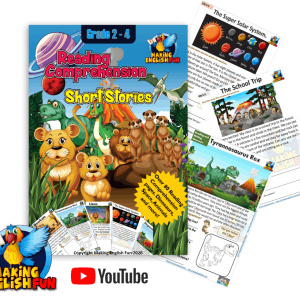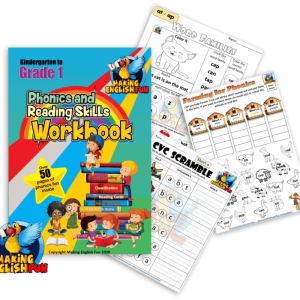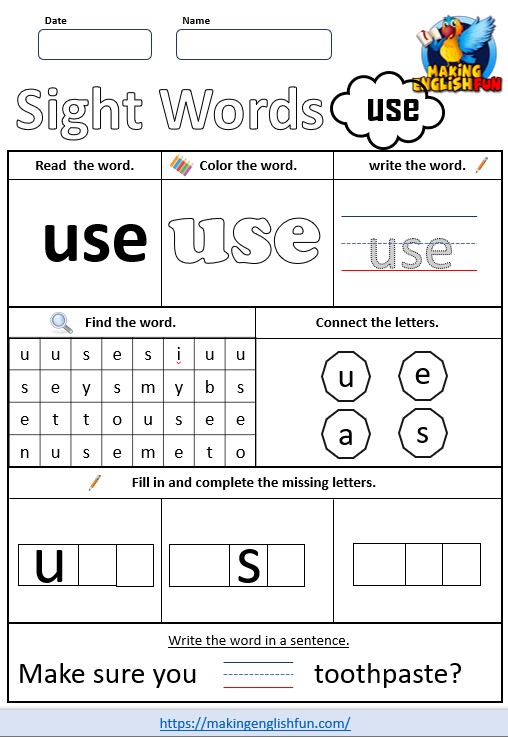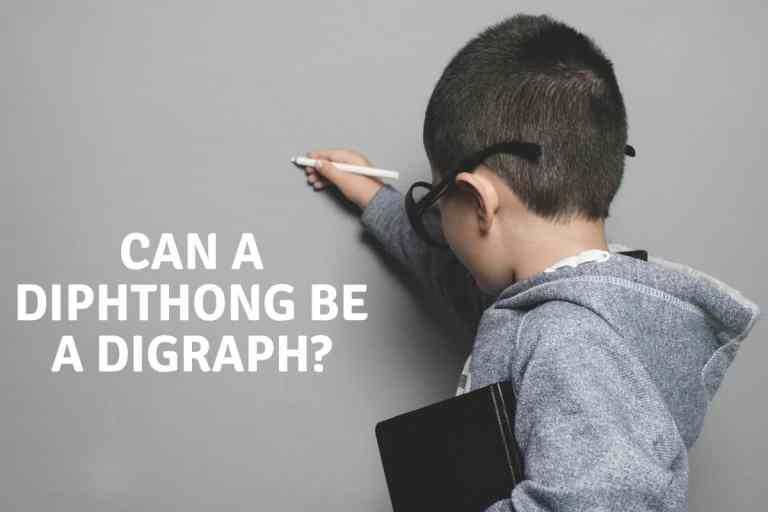How to teach Guided reading
Implementing a guided reading scheme, the whys, who’s, where’s and what’s!
I have been an English teacher for a little over 10 years, and for a significant amount of that time have worked with Guided Reading (GR) programmes. On each time I have implemented, updated or rejigged the systems for the students I have before me I have meant to collate, upload and share some of the resources to help other teachers who are interested and to keep a record for myself (USBs and Hard drives disappear, or in my case end up in the washing machine. I have always found GR to be an effective and rewarding way of improving and motivating students with reading and a useful change of pace and focus from full class lessons for both students and teachers. I want to add a note of caution here though, there is more to grabbing a leveled book and just heading off with your students. Not enough importance is placed on, especially emergent readers, the importance of decoding, and i will be writing about this in the next 2 months.
I have worked mainly with ESL Students but the pedagogy and methodology are not mutually exclusive to mainstream or ESL classrooms.
I will include links to resources at the bottom that are free to download and adapt and am happy to receive comments and suggestions at all times.
Happy reading!
What is Guided reading?
Guided Reading is a teaching strategy that utilises small class teaching with groups of levelled students. The group should be made up of students of a similar reading ability who have similar needs to progress their reading.
The idea is to develop student’s skills to enable them to, ultimately, read independently, silently and fluently. They should learn reading strategies (highlighted and downloadable below) including context clues, understanding syntax, word structure, phonics, inference and other higher order thinking skills (also listed with example questions below)
Small class teaching with similar reading level students creates an environment that allows both weaker and abler students to participate with more confidence. Weaker students won’t be over shadowed by the enthusiasm of the more able, and more able will be able to interact with content more suitable to their reading level.
Teachers get to interact and develop relationships with their students in a smaller more personal setting, with the ability to assess and address learning needs on an individual basis.
Benefits of guided reading
- Small groups allow more focussed instruction
- Students work with similar reading level students
- Reading strategies can be targeted
- Levelled questions can be used
- Allows more intimate conversation, that can be student rather than teacher led.
- Students are likely to experience more personal successes with their reading
- More individual teaching time
- Allows the use of good and motivating books and subjects to motivate students and introduce new cross curricular concepts
How to implement. (see notes at the bottom for more detail)
Before starting the programme
- Order leveled readers ( dont get caught up with the levels though)
- Match students to book levels ( see above)
- Sort into four similar ability level groups
- Sort the books in to sets, and keep a record of them (they can go missing)
- Keep the books in the same place and sort by levels
- Try to make sure there is a mix of fiction and factual book
- Plan where the reading will happen
- Make sure decoding is included when you plan the reading lesson, not just in the lessons surrounding it but also in the actual reading of the book
Levelling the students
There are many reading level benchmarks out there in education, most are fairly similar and not hugely useful for teaching they often follow a publisher’s book list. Fortunately, better teachers than me have tried to produce comparison lists (I will link one here, but a quick google search will help as well) I use the reading recovery levelling system up to about level 30, though up to level 20 is very high level for young ESL learners, after this they have the ability to decode, construct words and it moves on from reading skills ( a little) to comprehension and Higher order skills. However, there are many different reading level systems that you can choose from. The one bit of advice when choosing I would give is to look who designed the system and who it is for, the difference between ESL and Native speaking students in terms of knowledge and ability to comprehend will be large even at a young age and this should guide your choices, basically know your audience! Also dont get caught up in fancy marketing, you know your students the PR company doesn’t.
Plan The GR lessons
- Choose / allow students to choose a book at their level
- Read through and check both the English language and the content for issues.
- Plan the classroom lessons while students are not doing the GR session.
- Find interesting / motivating tasks or topics related to the book
- Make sure timings are checked so the lesson runs smoothly
- Make sure the language and morphology is suitable for your students.
Teach the teachers
- Not all the teachers will have done this before allow time to train them.
- Allow for observations of lessons for teachers
- Provide documents to inform and educate
- Let management observe the lessons to ensure smooth running
- Be open to advice and questions
- Let all teachers know the benefits it can bring.
Running the lesson (see infographic for logistics)
- Try to have 2 or three places for the groups to learn.
- 2 of the four groups (group 1 and 2) leave the classroom to do guided reading
- Other two groups (3 and 4) stay in classroom with one teacher to learn reading skills / phonics activities etc.
- Half way through the lesson, ( time wise) the groups swap over and 3 and 4 come back to the classroom and 1 and 2 split into the GR groups.
- Have suitable activities and lesson planned for the classroom as per the students’ needs
- Be aware of time, it can run away from you!
Potential issues and solutions
- Lack of resources
This can mean anything from teachers to books. Guided reading is labour intensive with 3 teachers / TAs needed to run it optimally, if this isn’t possible there are ways that can be used to still provide the students with a more tailored experience. Self-directed learning tasks can be used in the classroom where the students work independently while the teacher or teachers can conduct the GR lesson, examples of these can be found on this and many other websites. It requires more planning but with good classroom management can be used quite well.
- Books
If books are an issue, I have now and in the past gone hunting for books sets (there are usually plenty hidden around the school) and tried to make them into a Guided reading set. This, while providing quantity, doesn’t always provide quality. Although there are many sets that are guided reading leveled by publishers, don’t be afraid to level a authentic children’s reader, Gruffalo etc, to provide the students with world class children’s authors, and to, on occasion have them share books if needed. As you get more confident in leveling books not in schemes so will your confidence also grow. If there is access to technology, there are a few good quality and for schools sometimes free resources out there. One of these is Epic, or get Epic which is on both PC and on the App-stores. This offers access to 25000 plus books (aimed at native English speakers though) for free for schools and teachers. Will link it in the text here. Other sites like StarFall have a free PC version and a paid app version though with less choice it does have games and is more young learner friendly. If you are a teacher who is fortunately to be able to provide your own resources (I know we shouldn’t have too) then book depository often offers good prices on good quality children’s readers. I use them fairly regularly for the readers I like to use and that students love to read.
- Locations
Sometimes its small, sometimes its busy, sometimes it’s used. Locations can be problematic as having groups in the same classroom can cause noise and attention issues fairly easily. Although three locations are optimal it can be done with just two, and at a push one. If your school has a library it is worth checking out the timetable for it and making use of it if its free, (hard to argue with holding a reading lesson in the library!) similarly if there are any subject rooms, art, music etc. that are not used each and every day these can be requested for the lessons you have. If you can find two places I suggest you hold the two reading lessons together, not the classroom and reading lesson due to noise and interference. If you can literally just use the classroom then the teacher who is teaching the two groups together will have to adapt their lessons to help keep the noise down for the other two groups, and some more sedate activities may be required!
- Groupings
Sometimes when you have assessed the students and gone through grouping them you will see some groups have a wide range of levels in them. This is preferable, and actually more common at the higher levels than the lower levels. I will include a handout on higher level students at the end as well, but in short as the group is higher level it may be appropriate to concentrate on higher order thinking skills, and comprehension strategies that even very high level readers should need help with. Make sure you choose books that will keep their interest, cool topics, relevant to their interests and ages and when ready exploring reciprocal reading is feasible as well. ( i will refer to this in later posts) With ESL students classroom management should, due to understanding, be more successful with these students and more independent tasks can also be used, with open ended questions. Depending on their level it is likely these students will be on the cusp of going from learning to read to reading to learn and that opens up more motivating subjects for them.
- Proof of progress
The aim of all school programmes is to help students progress their learning and there needs to be proof of this. As this is a skills teaching programme it is harder to prove this, especially in the short term, however once the students have been assessed to a reading level, this process can be repeated at a later time to gauge their improvement over time also, as it is formative assessment, it allows teacher to adjust their lesson and teaching in response to this improvement. I will offer and example of some 8 year old groups results over the year to give an example. ( names changed of course)
In short, when explaining this to other teachers and administrators I use a car and mechanic analogy, perhaps mistakenly! When you take your car to a mechanic you don’t want them to start a lot of work that may not be needed. You want them to take a look, find out what areas need work and then address those. Making it quick, efficient and targeted. This programme put students into similar level smaller groups, looks at what they need and then allows teachers to develop lessons, resources and materials to address those needs. Finally, I didn’t mention this before but it’s up there in importance for both teachers and students as well.
When done well its rewarding, effective and fun for both!
After all of that of me jabbering on i will leave some resources to download here, they are a bit of a mix but hopefully help some of you run, plan and convince your schools to try it out! Give me a little while if your here right after i post this! I am adding the resources as i polish them!
Please refer back before Christmas when i will be releasing a lot more resources on the skills of reading and how to teach decoding.
Please check out my other posts on both VR in schools and other educational matters and if you want to know more feel free to email me on info@makingenglishfuncom.wpcomstaging.com or to sign up with the form below.
About the Author

Hi I’m Marc. A teacher of over 15 years, mostly English but dabbled in outdoor pursuits and media. Thought is was about time to sharing both what I have learnt during that time and the resources I have put together. On this site we aim to teach the theory and share our thoughts, but also go that one step further and give you access to the hard resources you need for your class or for you children. Feel free to take a look at our resources, email us on info@makingenglishfuncom.wpcomstaging.com, or jump on the Facebook group to ask questions. Happy learning, teaching or playing!
Post by Marc of Making English Fun











5 Comments